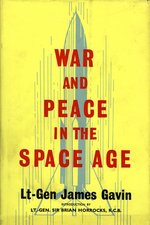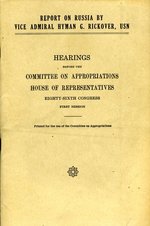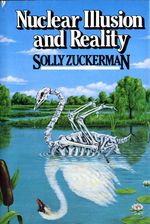After World War II, the U.S. armed forces suffered massive cuts in personnel and materials, with the defense budget reduced to a fraction of its wartime size in order to repay debts, provide services for GIs, and rebuild Europe. The production and testing of nuclear weapons, however, continued on. As the United States worked to improve its arsenal, first through minor changes to bomb construction and eventually by building the hydrogen bomb, the Soviet Union developed its own nuclear program, aided with information stolen from the United States. The first Soviet bomb test took place in 1949.
After 1950 U.S. military strategy relied heavily on the concept of "mutual assured destruction (MAD)" - the assumption that a nuclear war would mean complete devastation of both combatants. Throughout the Cold War, the U.S. remained committed to a non-aggression policy which explicitly stated that the United States would not initiate a nuclear conflict. As a result, its nuclear program was designed to ensure optimal retaliation - a scare tactic meant to deter Soviet aggression.1
MAD, though effective, was a highly dangerous strategy because it demanded that each potential combatant have the largest possible stockpile. With thousands of nuclear missiles dotting the globe, it seemed only a matter of time before one was launched either through a planned aggressive act or a technical blunder.2 In this atmosphere, the U.S. military attempted to promote defensive action through public education, the construction of bomb shelters, strategic silo placement, and eventually defense systems including the Reagan-era Strategic Defense Initiative.3 Even with these safeguards in place, there was little hope that the U.S. would survive a Soviet nuclear assault, thus rendering the MAD program the only viable defense.
From the mid-1950s through the 1980s, the United States and the Soviet Union maintained a stalemate punctuated by episodes of violence such as the Korean and Vietnam Wars, and moments of panic like the launch of Sputnik, the Cuban Missile Crisis, and the first Soviet hydrogen bomb test.4 Through it all, there was little the American government could do to secure its people or its assets.
By 1980 the military and public alike had fallen into a mood of fatalism created by a sense of defenselessness and fear that the Soviet Union might be gaining a strategic advantage.56 It did not appear to be a question of if nuclear war would occur but when. Even Ronald Reagan's promise of protection through the "Star Wars" program, a satellite-based defense grid, could not shake the sense of hopelessness that had so deeply permeated both the public and military psyche. Ultimately, MAD and the U.S.'s non-aggression policy allowed the United States and Russia to survive the Cold War. In 1991 the Soviet Union fell and with it collapsed the single largest threat to American security.
Notes
- 0813. Lapp, Ralph E. The Weapons Culture. How the Tyranny of Weapons Technology has Taken Over Society. New York: W.W. Norton, 1968. UF767 .L273 1968. Return to text ↑
- 214 pages. Illustrated. 4to, pictorial wrappers. Chicago: Playboy. 1978. 0842. McNamara, Robert S. Blundering Into Disaster. Surviving the First Century of the Nuclear Age. New York: Pantheon, 1986. UA10 .M39 1986. Return to text ↑
- 0751. Hart, B.H. Lidell. Deterrent or Defense. A Fresh Look at the West's Military Position. New York: Praeger, 1960. UA11 .L5. Return to text ↑
- 0592. Abel, Elie. The Missile Crisis. Philadelphia: Lippincott, 1966. E841 .A2 1966. Return to text ↑
- 0777. Kahn, Herman. Thinking About the Unthinkable in the 1980s. New York: Simon and Schuster, 1984. U263 .K33 1984. Return to text ↑
- 0720. Gervasi, Tom. The Myth of Soviet Military Supremacy. New York: Harper & Row, 1987. UA770 .G42 1987. Return to text ↑




